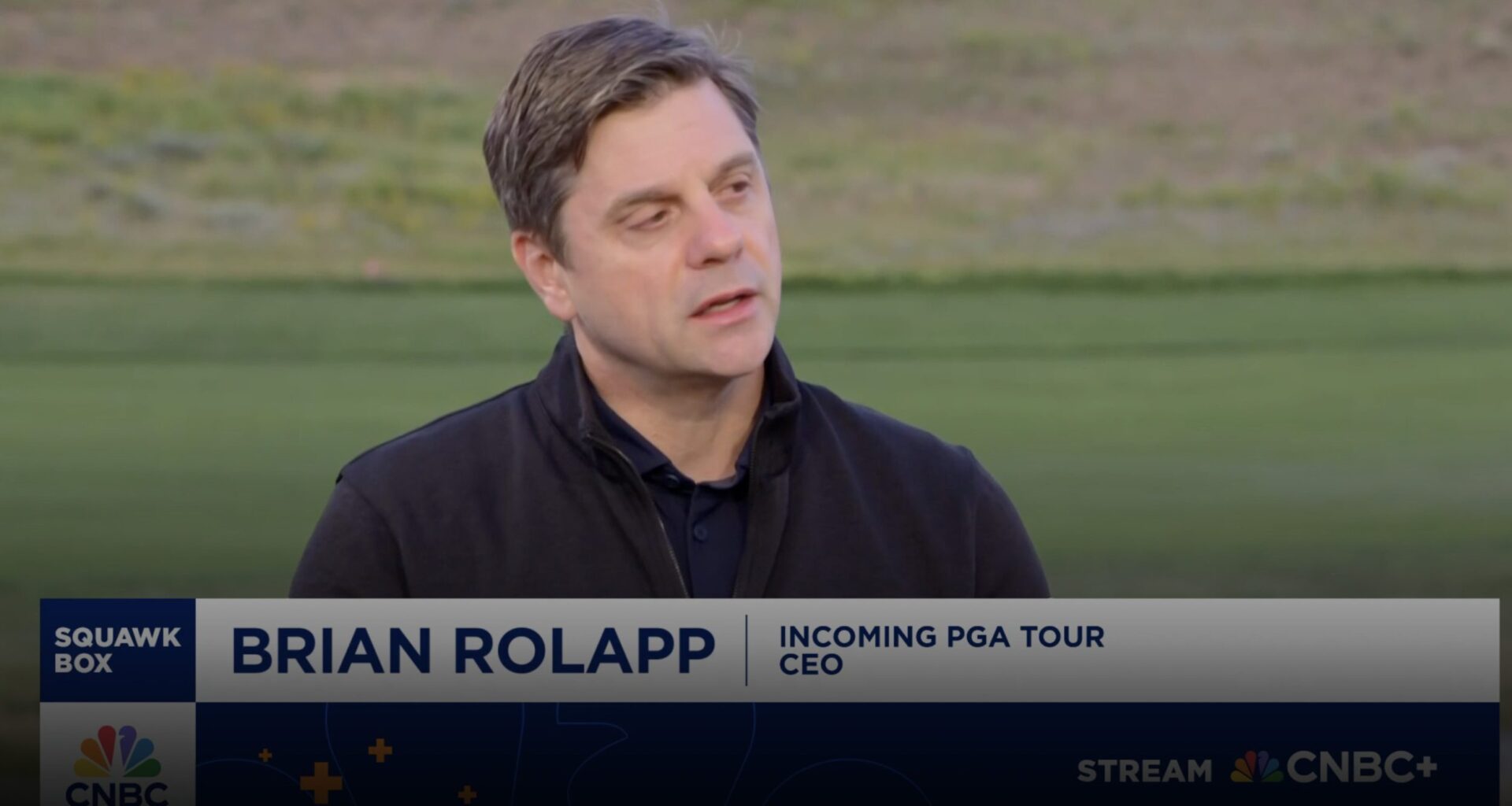When Brian Rolapp talks, it’s hard not to hear Roger Goodell.
With no clear immediate path to the NFL commissioner’s office, Rolapp quietly stepped away from the league earlier this summer. Now, the former chief media officer has taken on a new challenge as the PGA Tour’s first-ever CEO, a role created to help steer the sport’s evolving business and media strategy.
Rolapp spent the past seven years as the NFL’s chief media officer, where he helped engineer the league’s current $111 billion media rights deals. From network negotiations to streaming strategy, his fingerprints are all over the NFL’s modern media machine. That experience — and Rolapp’s deep well of relationships — is now headed to golf.
His new gig is separate from the role of PGA Tour commissioner, which Jay Monahan will hold through 2026. But in reality, Rolapp will soon take on many of Monahan’s responsibilities, including navigating the Tour’s evolving relationship with both its media partners and its players.
The PGA Tour is locked into long-term media deals through 2030. CBS and NBC hold the weekend broadcast rights, while ESPN+ runs early-round streaming. On paper, it looks solid. But as Rolapp said during an appearance on CNBC’s Squawk Box, the ground is shifting quickly.
“I think the good news on all of this is that: when you look at media and it’s fragmented and everything you know and everything you talk about here on-air, sports is still breaking through,” Rolapp said. “And if you look at where audiences are being aggregated — despite fragmentations in the media — it’s been around sports.”
The NFL has already followed its fans to digital platforms, from exclusive games on ESPN+ to full-scale productions on Peacock and Amazon. Rolapp knows how to meet consumers where they are. And at the PGA Tour, that will be a central challenge.
One thing Rolapp will have to consider: when sports move from traditional TV to streaming, platforms love to highlight their younger audiences. But that shift often says more about who’s missing than who’s tuning in. Older viewers tend to struggle with streaming platforms, which pulls the average age down, but also leaves a key demographic behind. And for a sport like golf, which already leans older, that’s not exactly a trade-off you can afford to make lightly.
“We need to go where the fans are,” he continued. “And increasingly, the fans are spending their time(s) in digital. And I imagine a big priority, as I get there, is to increase our digital footprint in all sorts of ways. That could include the tour events themselves, but it also could include everything in between the tour events, and tell the stories of these golfers. And tell the stories of the sport, which I think is underrepresented in media.”
He’s not wrong. There’s plenty of untapped opportunity to grow the sport’s story, but it won’t come easily. The media and players have been clashing more lately. Some golfers refuse to answer questions after rounds, and others openly push back against how they’re portrayed.
That friction won’t disappear overnight. But Rolapp’s job isn’t just to manage it; he’ll need to make the product more compelling anyway.
And if the NFL taught him anything, it’s that fans may be scattered across platforms, but sports still have the power to unite them, that is, if you know how to find them.
